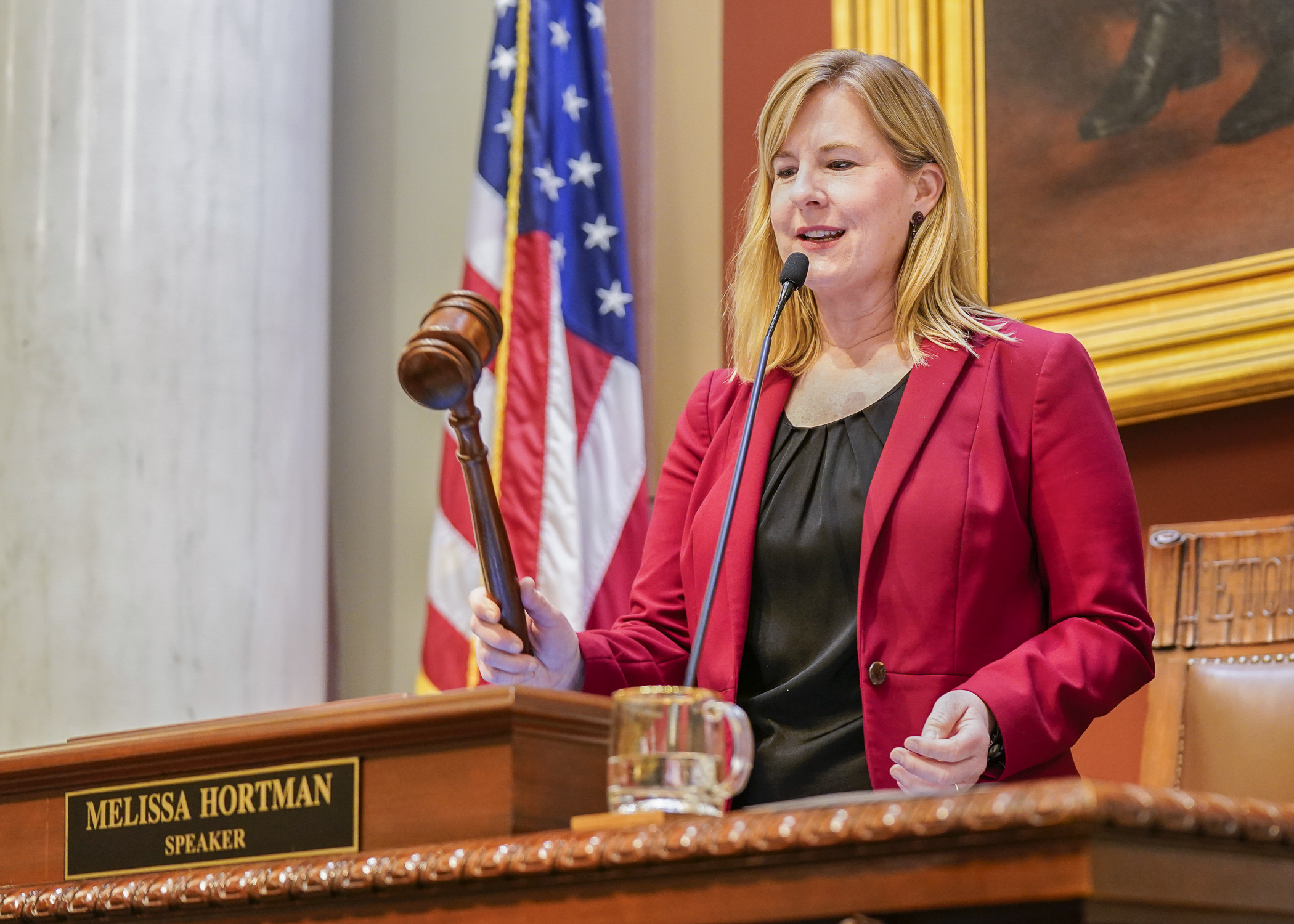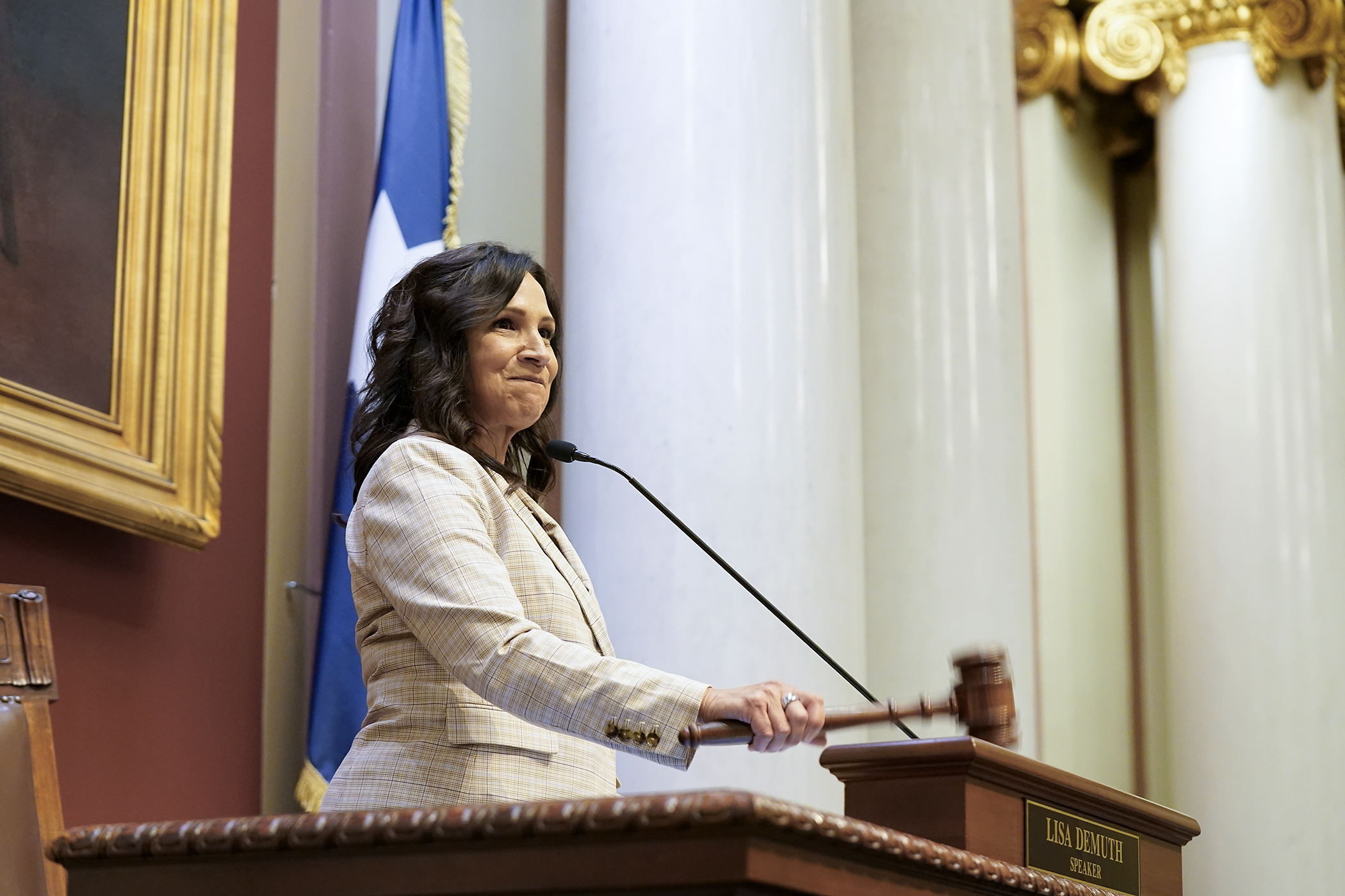Higher education committee approves big increases for schools and scholarships
After years of lamenting that they were chronically underfunded, the state’s public colleges and universities are closer to a big funding bump that could mean lower costs for students.
On Thursday, the House Higher Education Finance and Policy Committee approved the omnibus higher education finance bill by a voice vote without dissent, sending it to the House Ways and Means Committee.
Sponsored by Rep. Gene Pelowski, Jr. (DFL-Winona), HF2073, as amended, would provide $4.16 billion in funding to the Minnesota State colleges and universities system, University of Minnesota, and state scholarship programs administered by the Office of Higher Education. That represents a $650 million increase over the previous biennium, or 18.5%.
[MORE: Read about the bill, View the spreadsheet]
The largest slice of the bill’s appropriations would go to Minnesota State, which would receive $1.91 billion, a 21% increase. The University of Minnesota would see its funding rise 14%, while state financial aid programs would have 22.7% more money available than in the previous budget.
And the smallest appropriation among the four facets of the higher education omnibus – funding for the Mayo Clinic’s education programs – would get a 33.2% boost.
An amendment proposed by Rep. Greg Davids (R-Preston) that would add health care facilities to the bonding portfolio of the Minnesota Higher Education Facilities Authority was withdrawn after Pelowski explained the language is in a bill currently in the possession of the House Health Finance and Policy Committee.
“I think that some work still needs to be done on consolidating some of these programs,” said Rep. Kristin Robbins (R-Maple Grove). “I’m fundamentally concerned that there’s no initiative for a study on rightsizing both the U and the Minnesota State system, given the enrollment trends and the enrollment declines we have seen for the last 10 years.”
“I agree with you,” Pelowski replied. “We have not been in this situation for a long time, where we’ve had resources. We’re going to have a public conference committee where we will be exchanging offers at each meeting. And I intend to take into consideration a number of the things you brought up.
“I also would hope that we’ll have interim hearings. We have to make sure that this investment is going to be done at the levels that this committee took a look at,” he continued. “Studying budgets. We studied budgets not just at the system level, but at the university and college levels. We studied enrollment. We studied the structural deficits of all of these campuses, and we even got into particular programs. I want to continue that. I want to know how this money is going to be invested. And I want to make sure, when we come back next session, if we need to tweak this, we’re going to tweak it. I don’t anticipate we’ll have any more revenue, but we can certainly tweak it in other ways.”
Related Articles
Search Session Daily
Advanced Search OptionsPriority Dailies
Speaker Emerita Melissa Hortman, husband killed in attack
By HPIS Staff House Speaker Emerita Melissa Hortman (DFL-Brooklyn Park) and her husband, Mark, were fatally shot in their home early Saturday morning.
Gov. Tim Walz announced the news dur...
House Speaker Emerita Melissa Hortman (DFL-Brooklyn Park) and her husband, Mark, were fatally shot in their home early Saturday morning.
Gov. Tim Walz announced the news dur...
Lawmakers deliver budget bills to governor's desk in one-day special session
By Mike Cook About that talk of needing all 21 hours left in a legislative day to complete a special session?
House members were more than up to the challenge Monday. Beginning at 10 a.m...
About that talk of needing all 21 hours left in a legislative day to complete a special session?
House members were more than up to the challenge Monday. Beginning at 10 a.m...